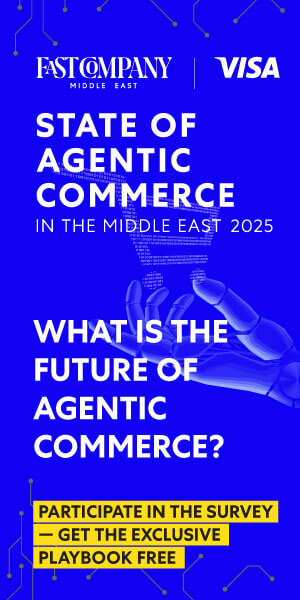- | 9:00 am
AI chatbots won’t save the media. But what powers them might
Publisher-built agents grounded in trusted archives may turn years of reporting into real products instead of just another chat widget.

If there’s an AI application in media that has had a rough road, it’s the chatbot. With the runaway success of ChatGPT, the whole idea that chat might be the next big thing in audience experiences took on new value, and several publications dove in, offering portals or widgets that enable readers to explore their content in a new way.
I think it’s fair to say none of these have been home runs, but some are more promising than others. Chatbots from Skift, USA Today, and The Texas Tribune have all seen some quiet success in user engagement, and while “chat” likely won’t save the media industry, it may well play an important role. Beyond the wins of improving site search and providing unique audience data, publisher-owned AI chat experiences may chart a path to the most mythical of all beasts in the AI era: the new business model.
This is where Time’s new AI Agent comes in. Time recently unveiled a new AI experience—yes, a chatbot, but one trained on the entirety of Time’s archive, about 750,000 articles going back to 1923. It has common AI-powered features like summarization, translation, and the ability to read an audio version of the article, but the main point is that the foundation of its knowledge base is a large corpus of human-verified journalism. Right now it’s deployed only on politics and entertainment stories, according to Axios.
Time’s Agent vs. Perplexity
I’ve been trying out the Agent to see if it provides a better experience than a more generic AI portal like Perplexity or ChatGPT—evaluating the outputs by looking at accuracy, recency, structure, and sourcing. Exploring the topic of the recent government shutdown and how it compares to other shutdowns in the past, I queried the Agent with the following prompt:
Give me a briefing on the history of U.S. government shutdowns, breaking down succinctly why each happened, when they happened, how long they lasted, and which party was presumed to have “won.”
It responded in six lengthy bullet points, each one summarizing the shutdown across the dimensions I asked for, along with a journalistic caveat at the end saying, “Time’s coverage emphasizes that ‘winners’ are often a matter of political framing rather than an objective metric.” When I asked for the breakdown as a table, it said it wasn’t able to create one, though it created a more structured, numbered list as a consolation prize. Specific Time articles were linked in each bullet.
The Agent appeared a bit challenged to bring up-to-the-minute information to the query. Absent from its summary was any mention that the shutdown was on the verge of ending (I performed these searches on November 12), and it was imprecise about the length, twice saying it had lasted 35-plus days. To be fair, that figure is probably what’s most relevant to the query, since day 35 is what made the shutdown the longest in history, and the query itself is clearly focused on historical data rather than what’s happening now.
On Perplexity, the chatbot responded with a table as the primary output, plus it was more precise about the shutdown’s current length (43 days) and mentioned a tentative deal had been reached. The response had less prose overall, and it harvested the information from several different sources (the main feature of Perplexity), including Wikipedia, CBS News, ABC News, CNN, NPR, and others.
The (AI) business of information
Based on what I experienced, I’d probably call it a tie, so points to Time and its partners at Scale AI for creating a user experience comparable to a multibillion-dollar company. But user experience is only one dimension of why you’d turn to Time’s AI Agent. The real value is in:
- The reliability of the information. As I said at the outset, because the Agent is “grounded” on the publisher’s content, which is guided by journalistic standards, it has the advantage of not potentially being skewed by unreliable sources. That doesn’t mean it doesn’t ever hallucinate or make errors of omission, but it’s starting with verified raw material.
- The licensing of that information. While everyday consumers typically aren’t concerned with whether the AI chatbot they’re using respects copyright, businesses who want to build on top of AI products are. By targeting the Agent solely at its archive, Time is addressing a key fear of any partners: Will they be held liable for surfacing content that doesn’t belong to them? That provenance is especially important for compliance teams in regulated industries that want to plug an agent like this into internal research tools or customer-facing products.
All this points to the deeper strategy behind just launching a new reader experience with the “agent” label. If Time’s archive can power an AI experience to visitors of its website, that can also be adapted to anyone who wants to pay for it. And it wouldn’t require handing over any IP—once a deal is signed, you’d need to create just a simple technical handshake, presumably via MCP (model context protocol) between a client’s front end and Time’s Agent. A bank, for instance, could wire the Agent into its internal policy portal so staff can query vetted news content without ever leaving the company’s systems.
This is conceptually similar to the licensing deals that Time and others have already signed with AI companies like OpenAI, but it’s technically different in an important way. A typical licensing agreement involves permission (often retroactive) to use the site’s content for training, plus access to the site for AI search crawlers so it can summarize news stories in response to user queries. Those searches rely greatly on metadata, the process is far from comprehensive, and there is limited visibility in how the content is used.
A better system would mean the publisher owns the agent layer and interface, which is what Time has done. Once you’ve done the hard work of formatting, ingesting, and processing your archive for AI, it makes its information much more reliable and easy for systems to parse, and you can choose to license it on your own terms. That has an effect on the overall power dynamic of any deals; the publisher now becomes a “tool vendor” as much as a content supplier.
So new kinds of deals are possible, but the question is: Will anyone make them? Time has a big archive, but it’s still small compared to the entire news output of the media industry—something ProRata is closer to building with its Gist search engine (which also includes Time). Then again, if buyers can get what they need from only a few specific sources, why not just pay for access to those and be done with it? This mirrors the age-old debate around cable channels: Will customers of this kind of information want to get it as a bundle, or à la carte?
Either way, the transformation of big archives into AI-ready corpuses, easily plugged into information portals (public or private), could end up being a large part of how media companies monetize their content in the future.
Creating new business models is a phrase that gets tossed around all the time in the media, but hardly ever seen, kind of like Bigfoot. We might have just had a sighting.






































